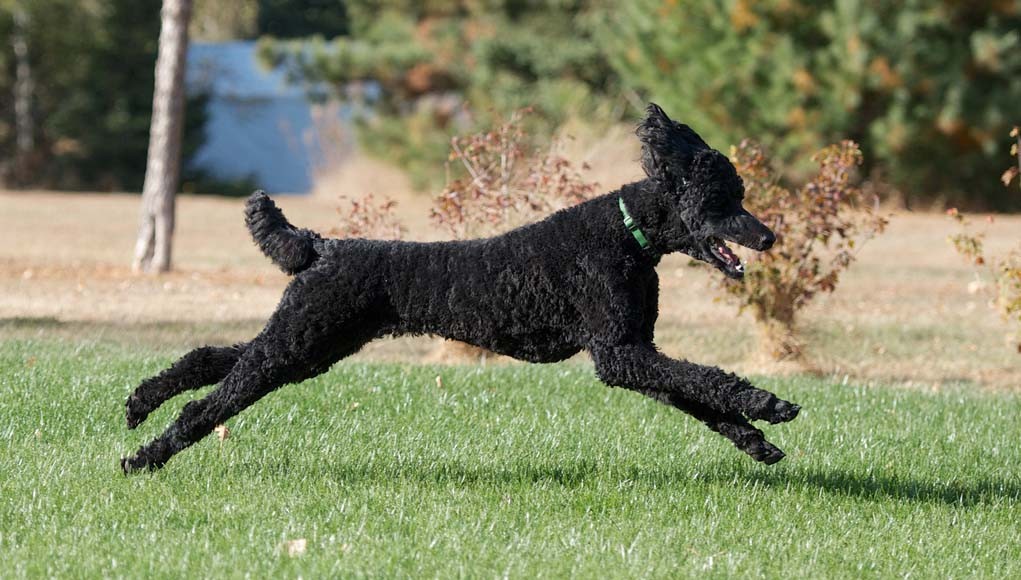There are some cases in which bias is inappropriate and not to be encouraged. Reporting the news, for example, or judging some sort of competition are both instances where bias can cause harm. However, bias IS appropriate where the safety of others (both human and animal) is concerned, which is why today's discussion is on the pros and cons of wireless dog containment systems.
When it comes to the infamous wireless dog containment systems, also referred to as electric dog fences, of course there are some advantages to using them with your dogs (why else would dog owners buy them?) However, these pros are heavily outweighed by the cons that come with them.
It's been a while since electric dog training collars have been receiving some heat from dog owners as of late. But many dog trainers have advocated the use of these shock collars on dogs as long as you purchase a high quality collar and learn how to use it properly. This is key in ensuring that your pet will never be harmed.
We know it is important to keep our dogs contained in our yards. If they get loose they could hurt themselves or hurt someone else. A dog running around with no supervision is never a good thing, but there are more humane ways to keep them in your yard than by using an electric fence.
If you're interested in other ways to keep your dog contained other than electric fencing, you can also check out our column Best Alternatives for Electric Dog Fences, which talks about different fencing options and training methods that can be used in place of wireless dog containment systems.
In this article, we’ll talk about the various aspects of electric fencing: what it is, how it works, and the ways in which it harms or helps. Lastly, we’ll list products that you can use to avoid having a wireless dog containment system in your yard.
Pros & Cons of Wireless Dog Containment Systems
Electric fences work by sending a shock through your dog’s collar whenever he crosses a certain boundary on your property. The shock is painful enough to continually negatively reinforce the behavior until the dog doesn’t want to do it anymore and is trained through fear not to indulge in crossing the fence.
Electric fences are effective, generally, in teaching your dog not to leave the yard. But aside from that, there are no positive benefits that come from using electric fencing. The negatives that are produced by it are severe, leaving no rhyme or reason for purchasing and implementing an electric fence and shock collar system.
If they work, what's the problem?
One of the major “cons” of using electric fencing has to do with the behavioral implications of it. There are many possible ways in which training your dog with an electric fence can do harm. Dogs have the same nerve endings that we do; they feel pain just like us. And pain, when unexplained and forced upon someone randomly, doesn’t always serve to teach the correct lesson.
RELATED: How to Deal with Dog Aggression Without Training Collars
Dogs who are subjected to an electric fence will likely not really be sure as to why they’re being punished. The opportunity for false association is there. For example, if the dog continuously gets shocked but doesn’t make the connection between leaving the yard and getting the shock, he might associate the pain with the outdoors, causing him to become afraid of, and averse to, going outside.

If you have an anxious or skittish dog, shocking him could make that anxiety worse. This is the same with aggressive dogs. The aggression at being hurt, and not understanding why, could become displaced, causing the dog to act out and possibly even attack other dogs and/or humans.
And what if your dog gets shocked yet still manages to break out of the fence? He won’t have much of an incentive to come home, will he? Actually breaking through the fence is quite painful and he probably isn't going to want to experience it again, thus keeping him outside of your yard and most likely lost.
Bigger dogs are often more successful than smaller ones when it comes to breaking out of a wireless dog containment system. It usually takes a strong motivation—i.e. a squirrel, a neighborhood cat, or some other fascinating thing that the dog can’t resist.
RELATED: No More Pain – Best Alternatives to Dog Shock Collars
Speaking of escaping the yard, did you realize that while electric fences work well to keep your dog inside the fence, they don't prevent other things from staying out? If you leave your dog alone out there and another dog (or even something worse) comes into the yard, your dog won’t have the opportunity that he needs to escape and hide.
He’ll be trapped in his invisible enclosure with whatever potentially rabid animal is inside the yard with him. And what about if you need to escape in a hurry? If there is a house fire or an intruder and you have to quickly get your dog off your property, you'll have to either drag him through the barrier knowing it will cause him pain, or waste the time to get the collar off of your dog's neck.
Electric fences are clearly a dangerous, and borderline irresponsible, choice for pet parents to make. Many have misconceptions about them because they are so popular to use and are frequently advertised. However, organizations including PETA, the Humane Society, and the ASPCA are against the usage of electric fences and have released a lot of information explaining their stance and the various, numerous detriments of electric fencing.
Alternative, humane options to electric fencing
Luckily, there are several alternatives to electric fences. An example of one of those is an actual fence. While keeping in mind aesthetic preferences, the Pet Playgrounds Non-Electric Dog Fence is made of polypropylene mesh and an 18 gauge vinyl coated metal hex wire system.
It has over 1,000 pounds of break strength and is nearly invisible from 10-15 feet back, so if you don’t want people to be able to easily see it, this is an excellent fencing option. The steel cable railing system keeps things out of your yard while keeping your dog contained inside. It is viable in any terrain and it's spacious—the posts are placed 25 feet apart, which also lowers costs.
This fence is also expandable and can conform to fit any size yard that you need. Best of all, this Pet Playgrounds Non-Electric Dog Fence is PETA approved (they field tested it and, according to the website, “loved it”). It's easy to put together and very humane; this fence is an excellent choice for any dog owner.

There are many other types of fencing that will successfully contain your dog. You can choose anything from a beautiful stained wooden fence to a chain link metal fence. Whatever fits your budget and meets the needs of you and you pet will be a better option than a wireless dog containment system.
RELATED: Don't Lose Your Dog! Why Your Pet Needs Dog ID Tags
The one thing you should keep in mind is that some homeowners associations do not allow visible fencing or certain types of fencing. If you live in an area where a neighborhood association controls what you can and cannot do in your yard, you should be sure to check with them first before you purchase anything.
Fencing isn't the only option
If fencing is not the avenue you want to take, you can also choose citronella collars, which have the same basic concept as a shock collar, but instead emit citronella, a plant base often found in insect repellent. It’s not costly, but it is effective.
Dogs hate the scent of citronella and wearing a citronella collar is a humane form of negative reinforcement that, when paired with other behavioral training tactics, is quite effective and, most importantly, harmless. An example of a highly-rated citronella collar is the AboiStop Citronella Spray Anti-Bark Collar.
These collars are typically used to control barking or other common dog behavior problems, but they can be used effectively to train your dog to stay in the yard as well. It will take more effort on your part because you'll have to keep an eye on your dog and press the handheld button to release the citronella scent when he approaches the barrier that you've set.
You should only have to monitor your dog closely for the first few weeks or months, and then he should pick up on the boundaries. Once he knows his boundaries you'll be able to let him roam and explore the yard without having to discipline him at all.

Behavioral training is also a valuable tool for any pet owner to use regardless of what other training aids you chooses to purchase. A well-trained dog is invaluable. You can practice recall training and leash training with your dog to teach him the boundaries of your yard.
RELATED: High Frequency Training: How to Use Dog Whistles
Recall training allows you to call back your dog when he is in ear shot. Leash training involves putting down the leash and taking a few steps back while you give commands in a clear voice, letting your dog know that although you have set the leash down, he is not to take advantage of that and run off.
Make sure when you train your dog that you use lots of positive reinforcements. Dogs can be a bit gluttonous, so giving them a snack or treat when they do something right is always an effective form of praise (though be careful not to overfeed).
Electric fences may be effective, but as you can see there are also a lot of dangers associated with them. There are many other more human ways to train your dog to stay in the yard, and they're safer for your pet too.
Spread the news about alternatives to electric fencing! The more people who know about it, the better off all dogs will be. Electric fences are popular right now, but hopefully that will change with time. For now, consider purchasing one of these other options and combining it with behavior training—you’ll be pleasantly surprised at how well it works.













